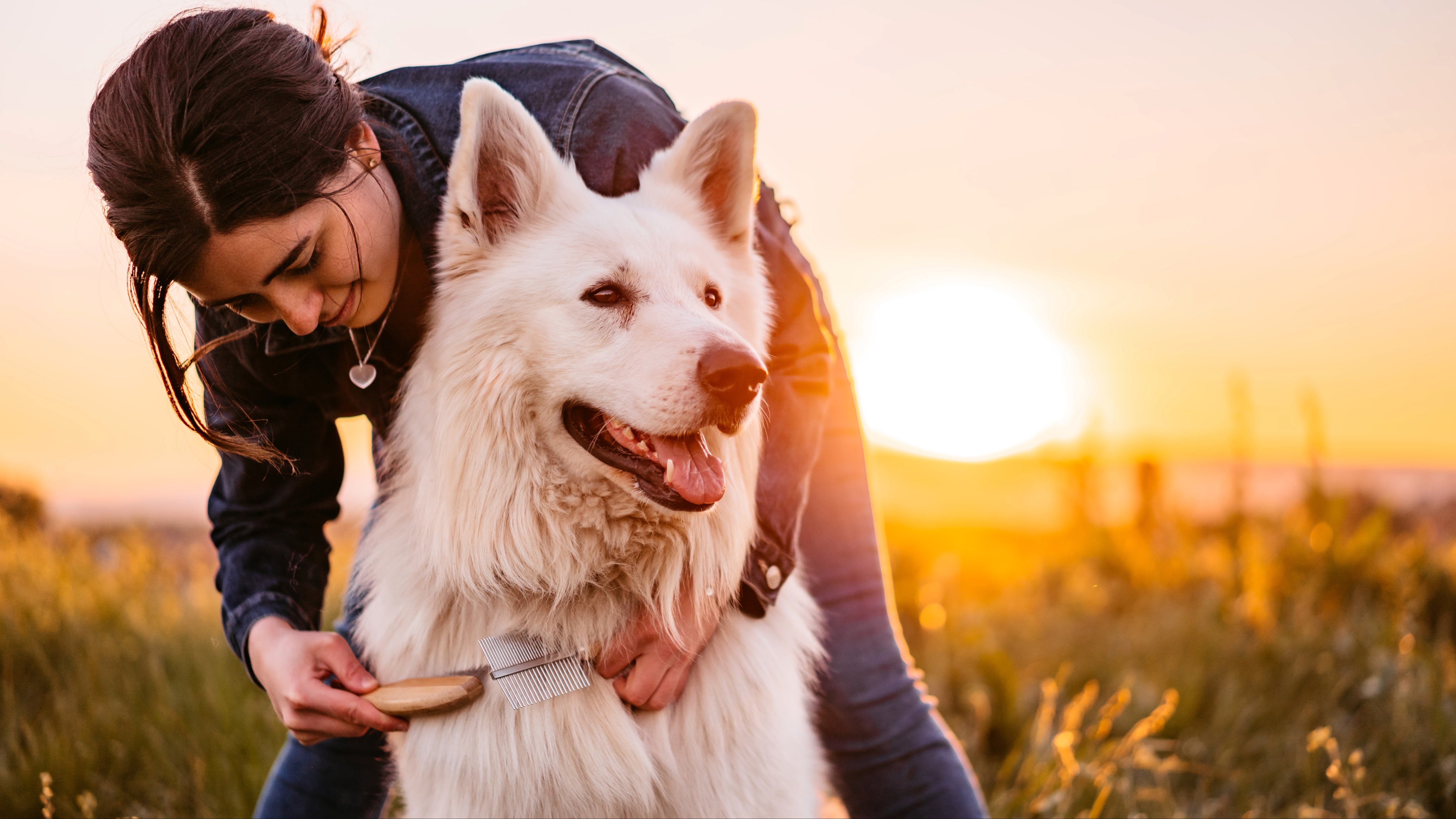If your dog doesn’t like being brushed, try this trainer’s gentle strategy
When it comes to grooming, slow and steady is always a good approach.

What does your dog think about being brushed? This is something that really can differ from canine to canine – some are more than happy being brushed, while others hate it.
And, of course, there are plenty of pooches in between who don’t enjoy it but are able to tolerate it. For some dogs, it might be that they’ve had a bad experience with being brushed in the past, while for others it may just come down to boredom or even that they’ve been brushed with the wrong brush for their coat type.
If your pup doesn’t like being brushed, you might decide to switch up your strategy and try a gentle approach that uses one of the best dog brushes to help ease them into it. Certified dog trainer Melissa Goodman of Mission Pawsitive has offered some advice in a recent Instagram post – will you try out her tips with your dog?
A post shared by Melissa Goodman | Dog Trainer (@missionpawsitive)
A photo posted by on
“Most dogs do not enjoy being brushed,” Goodman begins, “And it’s something you have to slowly get them used to.” In the video, she’s working with a dog, Teddy, and while she’s using a softer brush, she explains that he’s moving away from her while she brushes him.
Goodman offers him treats, which he takes, and he’s not moving away from her completely, but it’s clear that he’s not comfortable. She explains that, as the goal is to get Teddy comfortable with being brushed, she stops the process when his body language indicates that it’s “too much” and she swaps over to the softer side of the brush instead – he clearly prefers it.
“This side of the brush does nothing for his coat,” she says, “But is a much gentler way to introduce the brush. We can gradually work up to the correct brush for his coat type from here, but making the process pleasant is much more important than trying to do a good job right away.”
Knowing how to brush a dog that hates being brushed is valuable, but what about puppies in particular? Goodman also explains in the caption that more care should be taken with younger pups, as their skin tends to be more sensitive. “The softer the brush, the better to start,” she says. “A slicker brush is the proper brush for Teddy’s coat, but the wire bristles are too much for the majority of puppies in the beginning. It’s okay to slowly work up to it!”
PetsRadar Newsletter
Get the best advice, tips and top tech for your beloved Pets
If you’d like to know more about brushing your pup, here are the five types of dog brushes and how to use them.

Adam is a freelance journalist specialising in pets, music and culture, and mental health and wellbeing. He investigates and writes the large majority of news on PetsRadar, and collaborates with veterinary experts to produce informative pet care content.
Adam has a journalism degree from Southampton Solent University and a masters degree in Magazine Journalism from Cardiff University. He was previously senior editor at dog advice website DogTime.com, and has also written for The Independent, GoodToKnow and Healthline.
He owns two rescue cats, Bunny and Dougie, and has also previously had a rabbit, fish and Roborovski dwarf hamsters.
